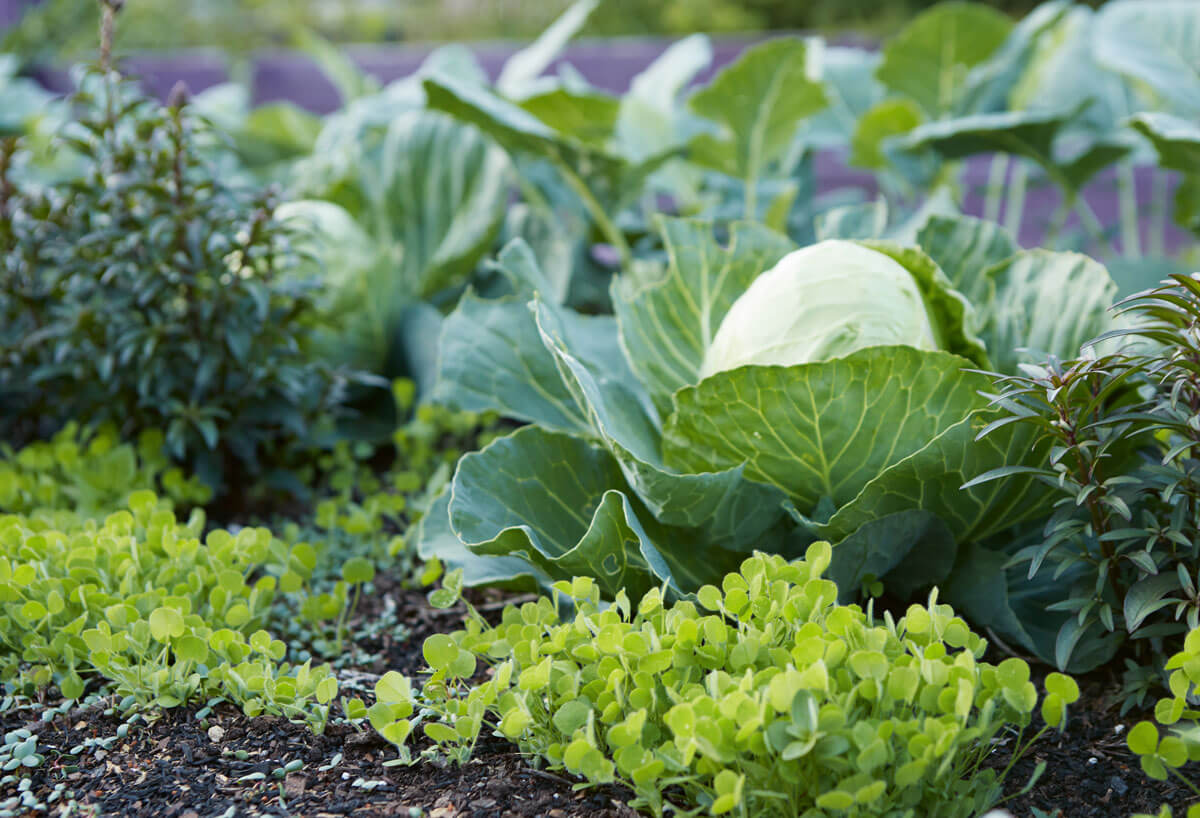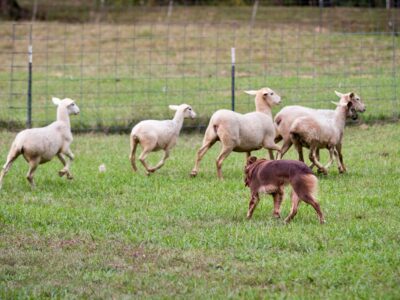Imagine being able to suppress weeds and add nitrogen into your soil simply by planting the right plants at the right time. Sound too good to be true? It’s not my friend.
This post is all about companion planting and living mulches. Learn how living mulches can work alongside no-till gardening methods, how to choose plants that will add nitrogen to your soil just by growing them, how to use them for weed management, and how they can help make your garden healthier (and you happier, amen!)
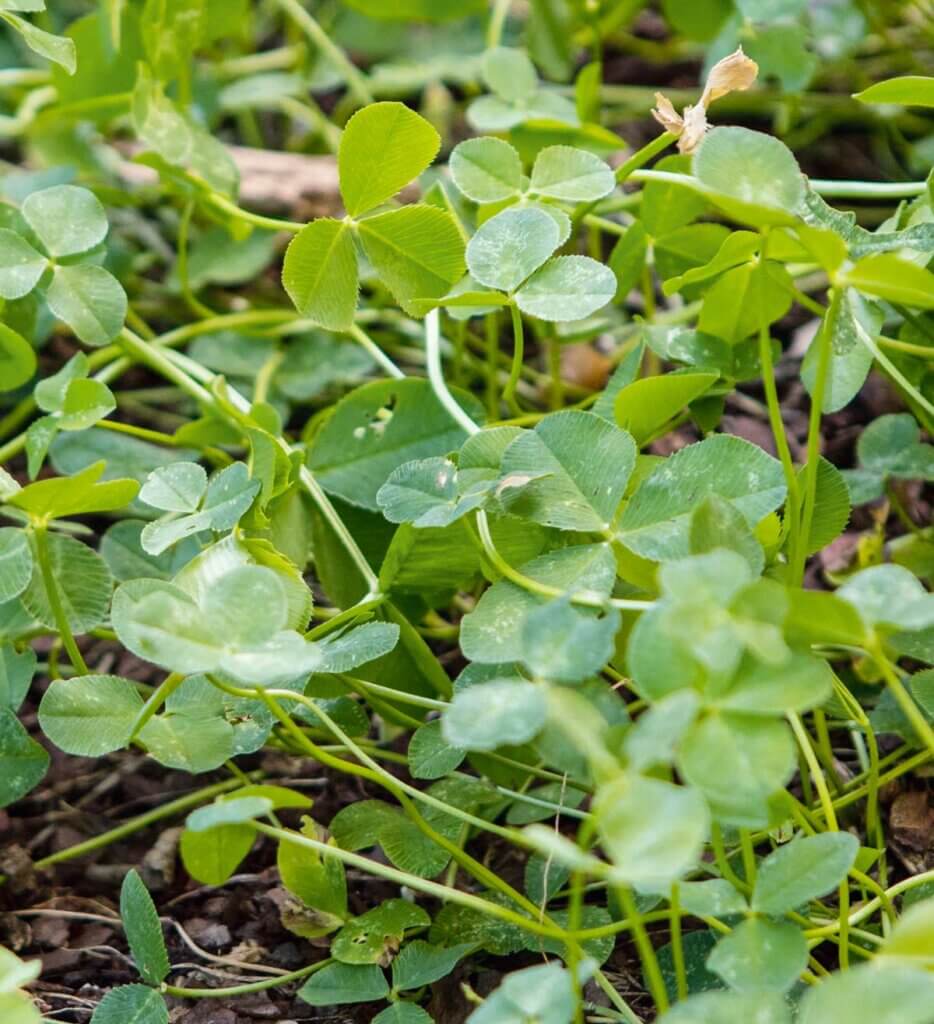
I’m so excited to be interviewing Jessica Walliser, a horticulturist, co-founder of Savvy Gardening, and author of many books, including “Good Bug, Bad Bug” and her newest title, “Plant Partners – Science Based Companion Planting Strategies for the Vegetable Garden“.
In today’s Pioneering Today Podcast (episode #299), we’re discussing both crop rotation and companion planting strategies, how to use living mulches to enhance and improve your soil, and what it looks like using them in different areas of the garden.
For a more foundational look into companion planting, check out episode 233 of the podcast where I discuss crop rotation advantages in a home vegetable garden with an entire segment just on companion planting.
I also discuss a bit more on how to get rid of bugs naturally with companion planting in podcast episode 266. Both are definitely worth checking out if this topic is of interest to you!
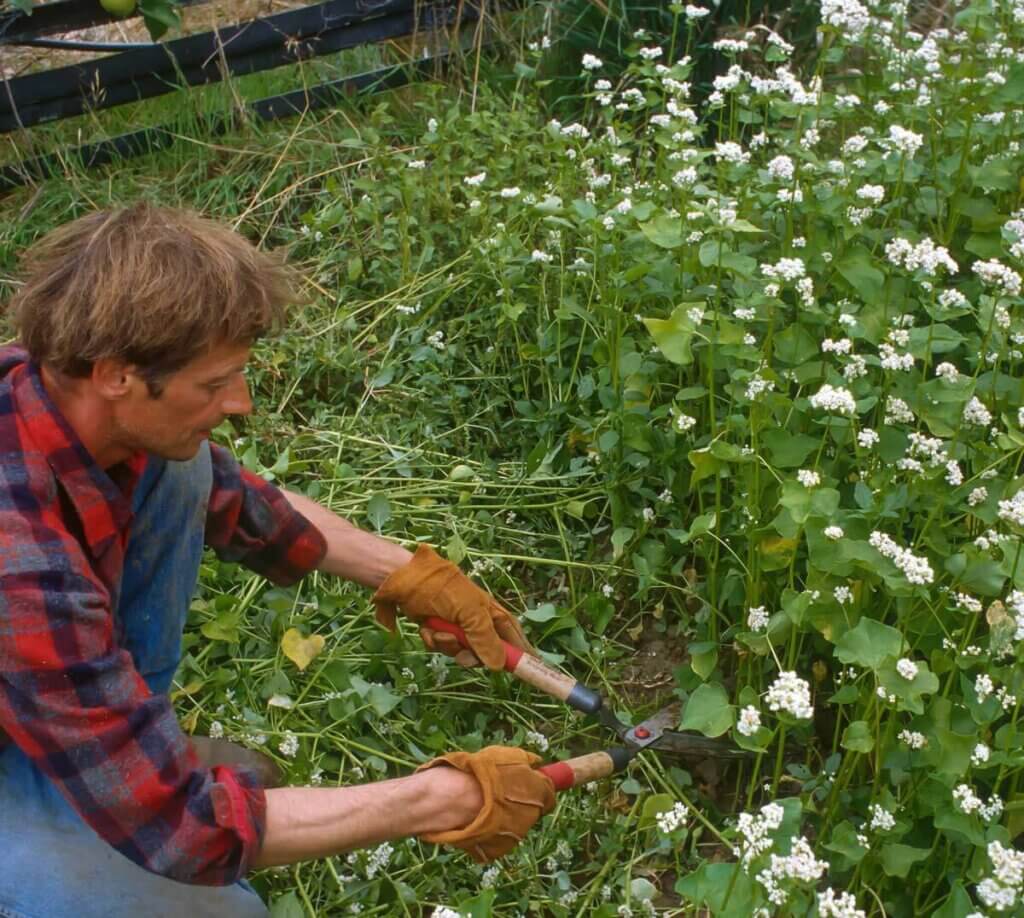
Table of Contents[Hide][Show]
- How Do Living Mulches Work?
- 7 Goals of Plant Partnership
- Best crops for living mulch
- Benefits of living mulch vs. woodchips
- Annual vs. Perennial Living Mulches
- How to Plant Living Mulch
- Top Recommendation for First Time Cover Crops
- How Allelopathy Suppresses Weeds
- How Long Do You Wait Between Planting Allelopathic Crops and Vegetable Seeds?
- How Do You Keep Living Mulch Out of Your Beds?
- What is a Mulching Mower?
- Resources & Links:
- For more organic gardening tips, check out the following posts:
How Do Living Mulches Work?
For so long people have thought that cover crops supply the nitrogen only once the plant has been tilled under. It was believed that as the plant breaks down, it then releases the nitrogen into the soil for the next gardening year.
While this is true, there is actually a lot of nitrogen transfer that takes place while the plant is in a living state. And that’s why we love using living mulches throughout the gardening season. You don’t have to wait for that Crimson Clover to die and turned into the soil. You’ll get more nitrogen that way, but you’ll still get about 70 pounds per acre by just letting it grow.
This happens through the mycorrhizal network. This is a network of fungi that form under the ground, embed themselves in the roots of your plants, and send themselves out into the soil, taking carbohydrates from your plants in exchange for providing them with nutrients.
So this network extends underground between plants and is involved in transferring nutrients from plant to plant.
Because the roots of the Crimson Clover are constantly dying while others are growing, they’re continually shedding their nitrogen-fixing nodules, releasing that nitrogen into the soil all season long.
7 Goals of Plant Partnership
When considering plant partnerships there are seven goals. You may be looking for just one, or a couple of these benefits, but by utilizing companion planting you can achieve the following goals:
1. Weed Management
2. Soil Preparation and Conditioning
3. Pest Management
4. Biological Control
5. Disease Management
6. Attracting Pollinators
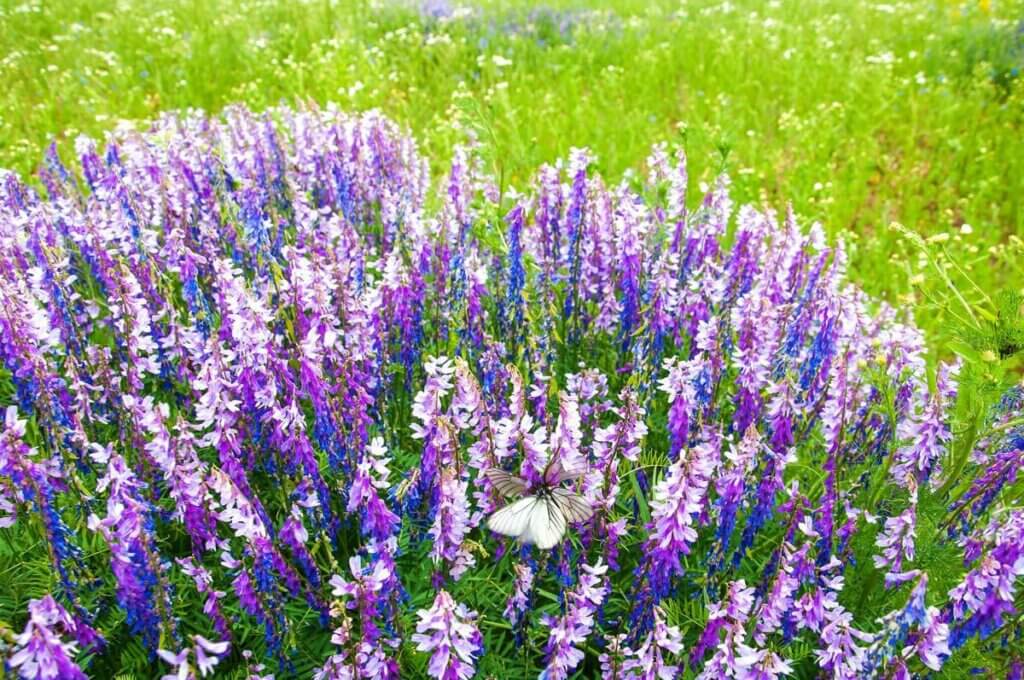
Best crops for living mulch
You may have heard that leguminous crops are always best for cover crops. This is true because leguminous crops are best for replenishing and restoring nitrogen in the soil. However there are many other cover crops that are beneficial, it really boils down to the reason you’re using cover crops.
- Crimson Clover – an annual legume that is a great companion for cole crops like cabbage, kale, collards, Brussel sprouts, etc.
- Medium Red Clover
- Sub-terranean Clover
- White Clover – do be mindful with white clover as it’s a perennial living mulch, it will not die off after one year and tends to come back stronger each subsequent year. Stick to planting white clover between rows or areas where you don’t mind it taking over.
- Vetch – this living mulch actually has the ability to suppress soil-borne diseases.
Benefits of living mulch vs. woodchips
Woodchips will eventually break down overtime, which means you will continually have to buy mulch to practice this weed supression method.
But with living mulches, you can actually plant them once and enjoy their benefits for years, especially if you choose your crops wisely and pick varieties that will add nitrogen back into the soil.
Annual vs. Perennial Living Mulches
The best way to go about pairing your living mulches is to pair like with like. So if you’re growing an annual crop, then you’ll want to pair an annual living mulch with that crop.
If you’re growing perennial crops, something like asparagus, raspberries, blueberries, etc., you’ll want to pair it with a perennial living mulch.
This doesn’t mean you can’t ever change this, especially if it’s for something like a walkway. But it’s just a general rule of thumb.
Do keep in mind the height of the cover crop when pairing with your vegetables because you don’t want your living mulch to grow taller than the vegetable plant you’re growing.
If you’re trellising some veggies, you can get away with some of the taller living mulches.
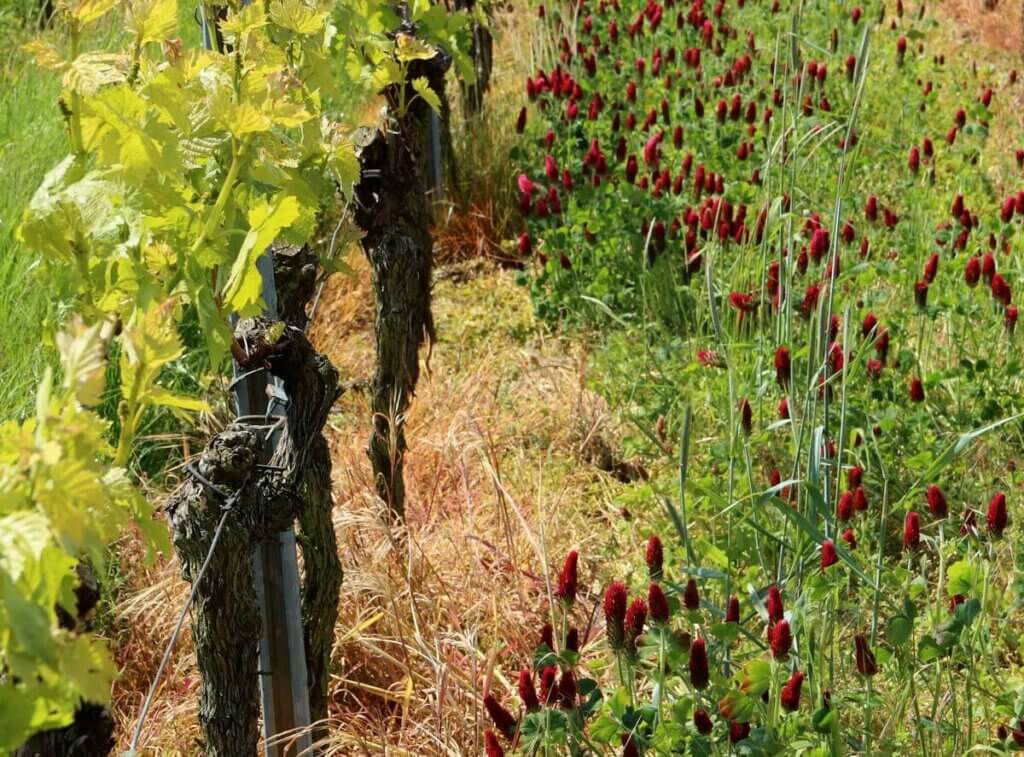
How to Plant Living Mulch
You may be wondering when to plant out your living mulches. Do you plant your crops, let them become established, then come back and plant the living mulch? Or do you plant the living mulch and your vegetable seeds at the same time?
The answer is slightly before or slightly after. Jessica recommends planting the vegetable crop (or starts) out just before and allowing them to get established, then coming back in and planting the living mulch so there’s no competition between the crops.
Ideally you want the crops to both be growing and flourishing at the same time. So just a couple of weeks between plantings is ideal.
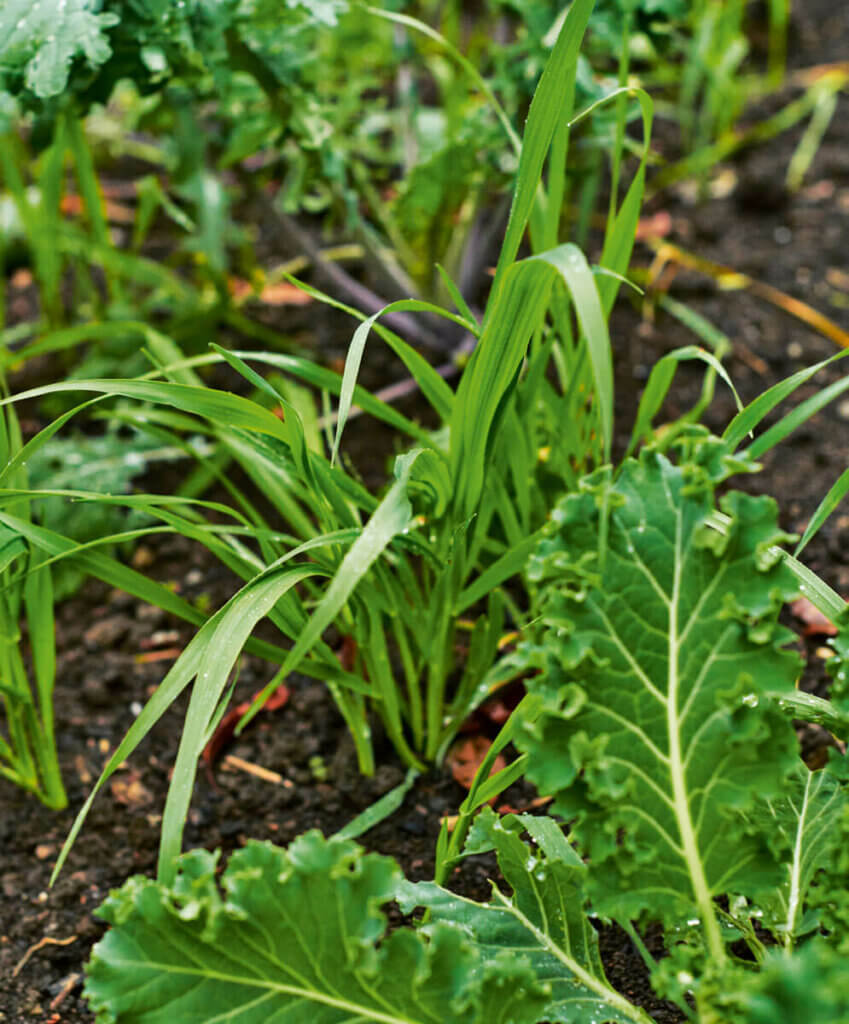
Top Recommendation for First Time Cover Crops
Oats is what Jessica always recommends for the first timers cover crop. The great thing about oats is that if you live in an area where you get freezing temperatures in the winter, the crop will always be winter-killed so you don’t have to worry about it re-seeding in the spring and taking over your garden beds.
All you need to do is sow them in the late summer, early fall, then once spring rolls around you just leave the debris in the garden and plant right through them.
Oats aren’t legumes, so they won’t fix nitrogen problems, but they will return organic matter and nutrients back into the soil. This feeds those beneficial microbes in the soil which, in turn, results in healthier soil.
How Close Do You Plant Living Mulch to Your Crops?
How close to plant the cover crop is determined by what the purpose of the cover crop is for.
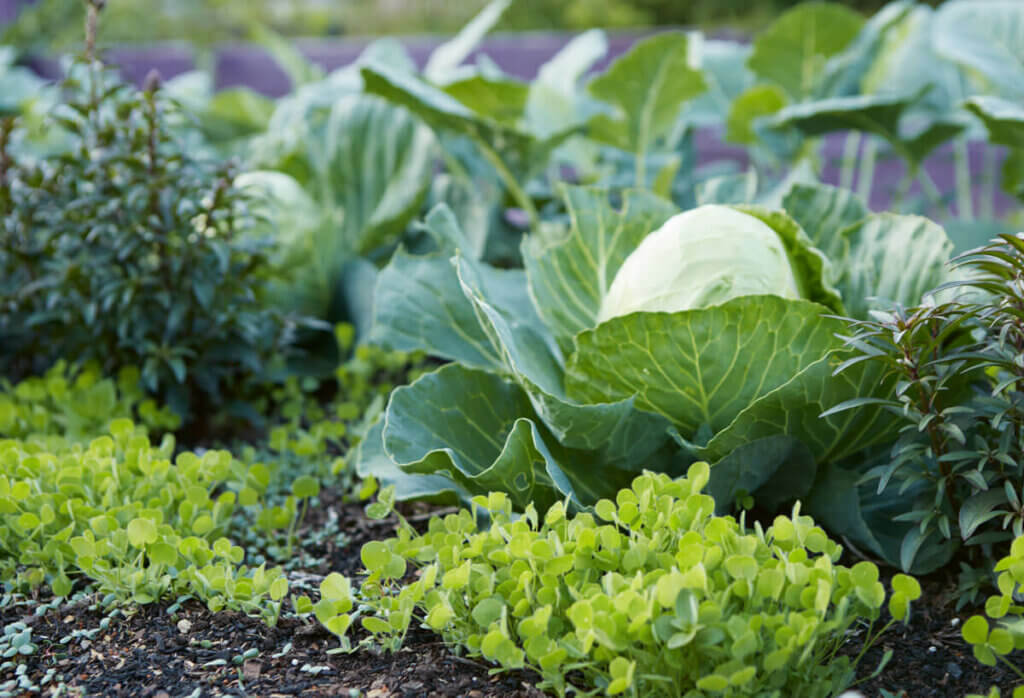
For Companion Planting & Nitrogen Transfer
For this to work properly the living mulch needs to be planted right next to the crop. The nitrogen transfer won’t happen if the crops are six feet apart, they really need to be planted right up under the skirt of the crop for proper transferring of nitrogen.
Soil Conditioning
If you’re just trying to build up the soil and condition the soil between plantings, then you don’t have to worry about where you’re planting it because this planting is done once your crops are done for the year (usually planted in early to mid-fall, depending on your zone).
Ground Cover & Weed Suppression
When planting living mulches as a ground cover or for weed suppression (like in your garden walkways), how close you plant to the crops will depend on whether you’re growing annuals or perennials.
Because annuals will die back each year, you can experiment by getting the living mulch as close to your crops as possible for some nitrogen transfer.
However, if you’re planting perennials, you may want to start by planting conservatively, so the living mulch doesn’t spread too rapidly into your garden beds and take over.
A good rule of thumb is that it’s always easy to plant more, but much harder to remove crops once they’ve built up a solid root system.
You can also read below for tips on how to keep living mulch out of your garden beds.
How Allelopathy Suppresses Weeds
Allelopathy is “the chemical inhibition of one plant (or other organism) by another, due to the release into the environment of substances acting as germination or growth inhibitors.” (Oxford Languages Dictionary)
We can take advantage of these compounds in the vegetable garden by growing cover crops and plants with allelopathic compounds that will restrict the growth of weeds, in particular from seed.
They don’t work as well with transplants or large seeds, but for the smaller seeds that many of our common weeds produce, this can be very helpful.

For example, winter rye is used as a cover crop that’s grown, then tilled into the soil to help amend the soil. But the allelopathic compounds can help restrict weed seed germination the next year. However, you’ll need to be careful about planting seeds in the garden the following year, like lettuce seeds, or you may not get a crop.
How Long Do You Wait Between Planting Allelopathic Crops and Vegetable Seeds?
This depends on what cover crop you planted and what you’re planning to follow the crop with. As a general rule of thumb, you want to avoid planting anything that starts from a very tiny seed (radish seeds, lettuces, kales, carrots, etc.).
You should be fine to plant something like zucchini, squash or transplants that have already germinated and established their roots.
How Do You Keep Living Mulch Out of Your Beds?
Because some of the perennial living mulches will send out shooters and continue to grow and spread, the best way to keep this from happening is by mowing down the crop before they drop their seeds.
Make sure you allow the clippings to drop right back down on top of the living mulch (using something like a mulching mower) because this will give you a big boost of nitrogen.
If you’re planting near something like a raspberry bed, I suggest adding in a metal edging, if possible. Choose one that sticks up above the ground by about 2 inches and goes below the ground by about 2 inches. That will keep the living mulch from growing into those beds.
What is a Mulching Mower?
Not all lawn mowers have the option of dropping the clippings back down on the ground, many lawn mowers will shoot the clippings off to the side out of a shoot.
A mulching mower will actually keep the clippings rotating around the blades until they’re chopped up into tiny pieces before dropping down onto the ground. This allows them to break down faster and keeps them from clumping up.
Resources & Links:
- Jessica Walliser’s Website
- Savvy Gardening
- Plant Partners – Science-Based Companion Planting Strategies for the Vegetable Garden
- Crop Rotation Advantages in a Home Vegetable Garden
For more organic gardening tips, check out the following posts:
- 10 Things Most Organic Gardeners Forget About
- What is Organic Gardening and How to Start an Organic Garden at Home
- 13 Basic Steps to Starting a Vegetable Garden
- Wood Chips for Garden Mulch – Beneficial or Not?
- How to Create a Gardening Plan for More Harvest and Less Stress
- 8 Common Mistakes Made by New Gardeners
- How to Get Rid of Bugs on Plants Naturally Tips that Actually Work
- 11 Tips for Organic Pest Control for Vegetable Gardens
- Cabbage Moth and Slug Control with Organic Gardening Methods
- Wood Chips for Garden Mulch – Beneficial or Not?
- Preventing and Treating Early Blight for Tomato and Potato Plants
- New Gardening Techniques & Varieties to Grow in 2022
- How to Harvest & Store Potatoes (w/out a Root Cellar)
- Gardening in September (Garden Tasks by Month)
[fusebox_transcript]
